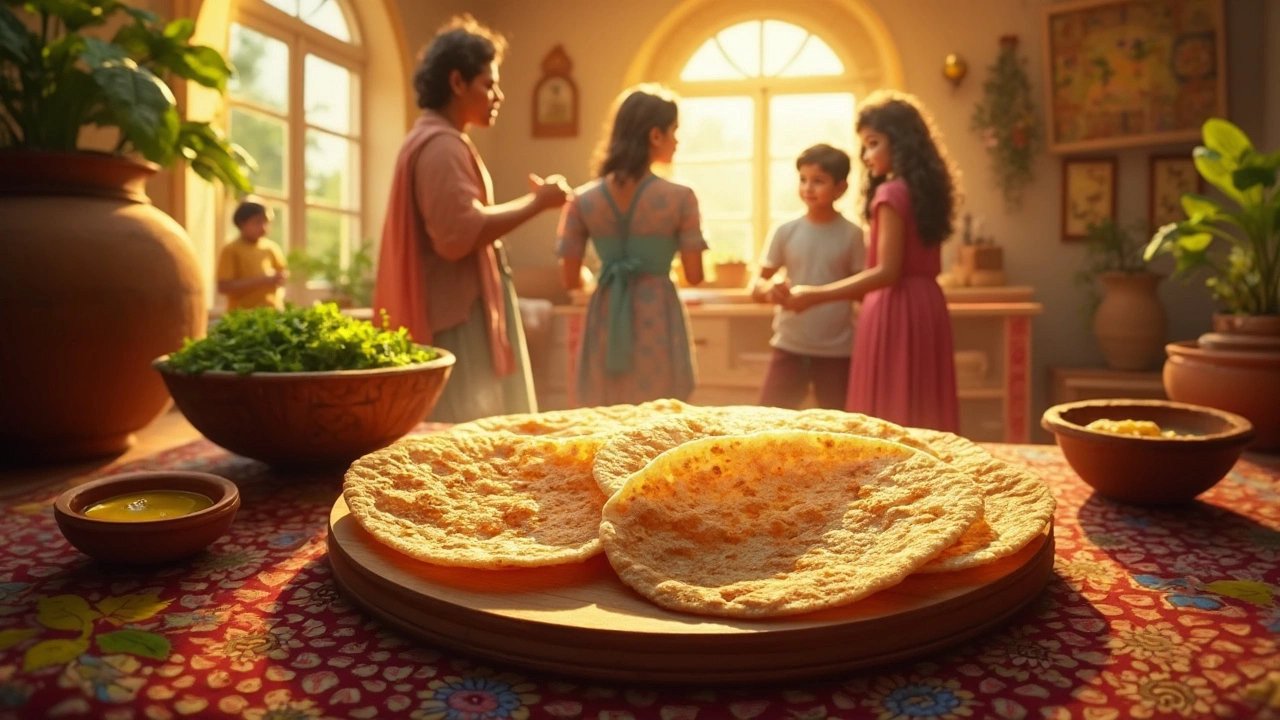Roti and Ghee: The Perfect Pair for Soft, Flavorful Indian Flatbreads
When working with Roti and Ghee, the classic duo of a thin whole‑wheat flatbread and clarified butter that yields a buttery aroma and tender bite. Also known as chapati with ghee, it roti and ghee brings together two timeless Indian kitchen staples. The first staple, Roti, a unleavened dough rolled out and cooked on a hot griddle (tawa), relies on proper kneading, resting, and heat to puff up. The second staple, Ghee, clarified butter with a high smoke point that adds richness and helps trap steam inside the bread, acts as both cooking medium and finishing drizzle. Together they form a simple yet powerful combo that many Indian households swear by.
Why Ghee Matters in Roti Making
Ghee isn’t just flavor; it changes the chemistry of the dough. Adding a spoon‑ful of ghee to the mixing bowl cushions gluten strands, resulting in a softer crumb. When you brush the hot roti with ghee right after it lifts off the tawa, the fat seeps into the pores, keeping the bread moist for hours. This step also creates a glossy surface that signals a well‑executed flatbread. If you skip ghee, you might end up with a dry, rigid roti that cracks when you try to roll it. The connection is clear: Roti requires ghee to achieve optimal softness and flavor. That’s why most traditional recipes list ghee right after the dough rests.
Aside from ghee, a few other entities play key roles in the final texture. Adding a tiny splash of oil to the dough (another cooking oil, such as vegetable or mustard oil) can further soften the crust, especially in cooler climates where whole‑wheat flour tends to be tougher. Some cooks sprinkle a pinch of baking powder or soda to lift the roti, but this is optional and can alter the authentic taste. The technique of “soft rolling” – applying even pressure and avoiding over‑flouring – is a skill that bridges the gap between a flat, hard disc and a puffed, airy roti. In short, soft roti tips include: proper kneading, a short resting period, optional oil or leavening, and a generous ghee finish.
Our collection of articles below dives deep into each of these steps. You’ll find a troubleshooting guide for roti that won’t puff, a discussion on whether baking soda belongs in the dough, and expert advice on when to add oil for the fluffiest results. Whether you’re a beginner looking for a fool‑proof method or a seasoned cook seeking subtle upgrades, the posts give you actionable insights you can try today. Ready to turn your kitchen into a roti‑making workshop? Keep scrolling to explore the full range of tips, tricks, and tasty variations that make roti and ghee an unbeatable duo.

Understanding Roti Calories and Digestion
Roti is a staple in many diets, but have you ever wondered about the science behind its calorie count and digestion? This article breaks down how many calories are in one roti, how different combinations like roti with ghee or sabzi affect calorie intake, and offers tips to make these meals healthier. Learn about digestion and ways to enhance nutrition while enjoying your favorite staple.